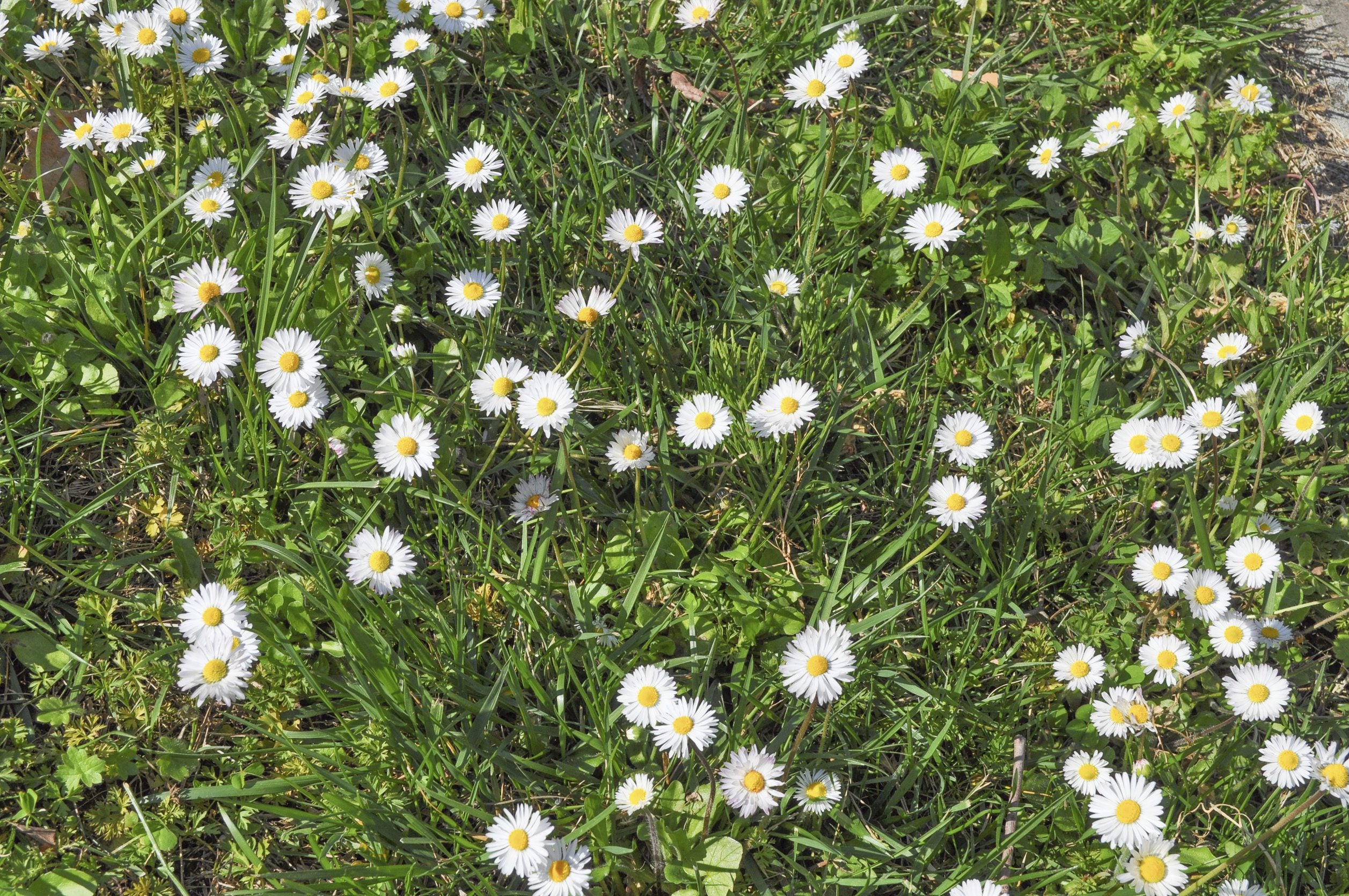Wildflower Lawns: Tips On Growing Flowering Lawns


Lawns can be deep and lush, but as every gardener knows, a beautiful lawn is both thirsty and labor-intensive. Many people are looking for lawn alternatives to create a pretty front area without all the watering, fertilizing, and mowing. Wildflower lawns or areas of flowering lawn weeds can be charming and low maintenance once established.
Pretty Weeds for the Lawn
The term “weed” may call to mind a scraggly, ugly plant that is hard to get rid of. The word simply means a plant you don’t want on your land. This group generally includes wildflowers; yet wildflowers have many of the advantages gardeners seek when they go looking for lawn alternatives. Although individual plant requirements vary, most native plants require neither fertilizer nor extra irrigation. If they depended on human maintenance, they wouldn’t bloom wild in nature to begin with. Flowering lawns built of wildflowers also have the advantage of establishing nicely where a turf lawn would be difficult. Think of steep slopes, rocky areas, or sand dunes. The odds are that wildflowers can grow in these areas, whereas a gardener would have to work effortlessly to keep a lawn alive in such inhospitable terrain.
Creating a Lawn of Flowers
If you gaze at neighbors’ flowering lawns with envy, maybe it is time to make a move toward changing your own vegetation. Moving from pure grass lawns to wildflower lawns requires an initial effort, as you dig up all or some of the lawn and plant the seeds of flowering lawn weeds, but after that, your work is done. If you want to plant wildflowers on your lawn, experts suggest that you plant the seed on top of your existing grass. Pick a site with moderately fertile earth, an excellent sward structure, and very limited amounts of perennial weeds or vigorous grasses. Cut the grass very low in late summer, creating bare spots – up to 50 percent of the lawn – by raking. Mix wildflower seed with sand and broadcast by hand over the bare spots in autumn.
Plants for Wildflower Lawns
What wildflowers should you try? For best results, pick plants that are native to your region, low to the ground, and that spread rapidly. Gardeners in appropriate regions commonly use these plants in wildflower lawns to good effect:
Additionally, creeping thyme is one of the best low-growing groundcovers since it requires no help to rapidly fill in bare spots between rocks or borders. It provides color, fragrance, and requires very little maintenance.
Sign up for the Gardening Know How newsletter today and receive a free copy of our e-book "How to Grow Delicious Tomatoes".

Teo Spengler is a master gardener and a docent at the San Francisco Botanical Garden, where she hosts public tours. She has studied horticulture and written about nature, trees, plants, and gardening for more than two decades, following a career as an attorney and legal writer. Her extended family includes some 30 houseplants and hundreds of outdoor plants, including 250 trees, which are her main passion. Spengler currently splits her life between San Francisco and the French Basque Country, though she was raised in Alaska, giving her experience of gardening in a range of climates.